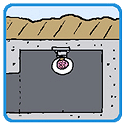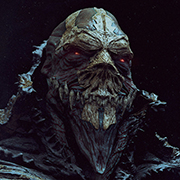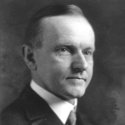|
EvanSchenck posted:Are we talking about national military machines as a whole, or just armies? Because the US Army is extremely well organized and integrated in it's command, control, and intelligence structures, but it is rather small. The principal advantage of the American military is in its support arms, the Navy and Air Force, which can disrupt enemy forces to the point that they're only marginally capable of resistance. I thought by current calculations the United States Army is one of the largest forces around. Maybe that was together with the Marine Corps and reserves? I guess the numbers might be a bit skewed due to U.S.'s power projection. Not many countries that can put hundreds of thousands of troops across the world and over an ocean, I guess. If any except the U.S., to be fair. U.S. Navy is pretty ridicolously huge though. Is it mostly a legacy of the Pacific War, or was there a concentrated effort to create such an overwhelmingly huge navy in peacetime?
|
|
|
|

|
| # ? Apr 28, 2024 19:45 |
|
DarkCrawler posted:U.S. Navy is pretty ridicolously huge though. Is it mostly a legacy of the Pacific War, or was there a concentrated effort to create such an overwhelmingly huge navy in peacetime? A lot of the modern force can be traced back to the 600 Ship Navy, which was a Reagan-era campaign platform back in 1980. Basically it was a part of power play trying to press the Soviets into matching our defense spending; the Soviets were never close to parity in naval power. A bunch of carriers and most of the Los Angeles and Ohio class subs were ordered and/or built during this era. I suppose though our current position of naval supremacy can be traced back to WWII, but it has been sustained through some pretty insane defense spending.
|
|
|
|
DarkCrawler posted:I thought by current calculations the United States Army is one of the largest forces around. Maybe that was together with the Marine Corps and reserves? I guess the numbers might be a bit skewed due to U.S.'s power projection. Not many countries that can put hundreds of thousands of troops across the world and over an ocean, I guess. If any except the U.S., to be fair. It's the largest in terms of force projection, ie. the art of bringing the hammer to the reds. The largest in manpower is the Chinese army, they lack air and sea power though.
|
|
|
|
I believe that if we are talking about current army size I believe that the largest per capita would be North Korea and the largest de facto would be China. US is pretty big but I think per capita it's not so big.
|
|
|
|
Vino posted:I believe that if we are talking about current army size I believe that the largest per capita would be North Korea and the largest de facto would be China. US is pretty big but I think per capita it's not so big. Yeah. It's still pretty big for a volunteer army, though? Looking at Wikipedia it seems that France is the only (major) country without conscription that has a bigger active army per capita then the U.S. You count smaller countries, I guess you get like Lebanon and Dominican Republic, but they are outliers.
|
|
|
|
At the risk of driving politics into this wonderful thread, but I'd say it's probably a function of active recruiting and a huge defense budget.
|
|
|
|
DarkCrawler posted:I thought by current calculations the United States Army is one of the largest forces around. It is the largest active duty force around, but in historical and per capita terms it's small, because it's an all-volunteer force. Our losses in Iraq and Afghanistan are a big deal, but over ten years the losses are less than what we took in three months on Okinawa. It's obviously a completely different kind of warfare, on a much different scale. The US army is just sufficient to project American power anywhere on the planet if we need to do so. Compare Desert Storm to the current nation-building projects. The military was definitely sufficient to trash the Iraqis in 1991. Conversely, even though the occupation of Iraq has finally come to more-or-less successful "conclusion," the country was totally out of control for the first half of the occupation, and the effort strained the army's capabilities to the utmost, with some tragic results (e.g. the US military often blows up civilians by accident because insufficient manpower obliges us to use firepower instead). Vino posted:At the risk of driving politics into this wonderful thread, but I'd say it's probably a function of active recruiting and a huge defense budget. There are also more benign cultural factors like the currently sky-high prestige of the military, its reputation for instilling discipline and skills training in young men, and its nature as one of the few organizations in America where a degree of advancement is open to anybody of merit. Schenck v. U.S. fucked around with this message at 20:23 on Sep 28, 2010 |
|
|
|
EvanSchenck posted:The US army is just sufficient to project American power anywhere on the planet if we need to do so. Compare Desert Storm to the current nation-building projects. The military was definitely sufficient to trash the Iraqis in 1991. Conversely, even though the occupation of Iraq has finally come to more-or-less successful "conclusion," the country was totally out of control for the first half of the occupation, and the effort strained the army's capabilities to the utmost, with some tragic results (e.g. the US military often blows up civilians by accident because insufficient manpower obliges us to use firepower instead). You're comparing two different militaries. Rumsfeld radically cut down the size of the military in 2001 and 2002 and moved away from boots on the ground toward planes in the air, which was exactly the wrong thing to do for the rebuilding of Iraq. This was, of course, at a time when the plan for Iraq was to topple Saddam and then ____________, so I suppose there was some logic in that decision. Still, the Soviet-invasion-ready military of 1990-91 was thoroughly different from 2003's force. Both are, again, different from the force we have with us today. Of course, if you were bringing these up to emphasise the difference in force composition and size then I totally agree and you should just ignore me.
|
|
|
|
EvanSchenck posted:There are also more benign cultural factors like the currently sky-high prestige of the military, its reputation for instilling discipline and skills training in young men, and its nature as one of the few organizations in America where a degree of advancement is open to anybody of merit. Sure, though wouldn't you attribute at least some of that to good marketing? That's why I said "active recruiting."
|
|
|
|
The number of the boots on ground is less important than what the boots on the ground actually do, though. Certainly it's true that the US military relied on goodwill-destroying kinetic responses like indirect artillery fire and air strikes to respond to incidents before 2006-2007, but I think that was a problem not of numbers but of doctrine.
|
|
|
|
Rodrigo Diaz posted:You're comparing two different militaries. Rumsfeld radically cut down the size of the military in 2001 and 2002 and moved away from boots on the ground toward planes in the air, which was exactly the wrong thing to do for the rebuilding of Iraq. This was, of course, at a time when the plan for Iraq was to topple Saddam and then ____________, so I suppose there was some logic in that decision. Still, the Soviet-invasion-ready military of 1990-91 was thoroughly different from 2003's force. Both are, again, different from the force we have with us today. No, you're right. I had known that as SecDef Rumsfeld had called for a transition to light mobile forces, but I wasn't sure about the extent to which it had actually been applied (esp. considering how little appetite the army itself had for the plan). Thanks for enlightening me.
|
|
|
|
HeroOfTheRevolution posted:The number of the boots on ground is less important than what the boots on the ground actually do, though. Certainly it's true that the US military relied on goodwill-destroying kinetic responses like indirect artillery fire and air strikes to respond to incidents before 2006-2007, but I think that was a problem not of numbers but of doctrine. I agree with this certainly, but let's not forget that one of the most important pieces of doctrine regards the visibility of police or police analogues. In a place where the local military has been eliminated (Iraq in 2003-6, and through bureaucratic means no less) or is insufficient in size (Afghanistan) your own men will need to pick up the slack.
|
|
|
|
Mr. Sunshine posted:I'm no expert on the exact events, but basically the US won at Midway because a fighter squadron got lost and happened upon three of the Japanese carriers as they sat helpless while refueling and rearming their planes. I thought that squadron joined the battle by tracking the course of a lone Japanese destroyer returning to its fleet? They were sort of lost up to that point but thankfully that one destroyer stayed in place to hunt an US sub and by the time it gave up it accidentially guided in the bombers right to the Japanese flat-tops. We were still wicked lucky that Nagumo made what turned out to be the wrong call.
|
|
|
|
I thought a Catalina scout plane did that destroyer tracking.
|
|
|
|
IIRC, Shattered Sword is of the opinion that the 'Miracle at Midway' was less a miracle than popular history imagines -- the US Navy outnumbered the Japanese in number of planes (including air-strip based aircraft) and had better damage control, etc. (The Japanese had an edge in quality of aircraft and had some very experienced pilots, as evinced by Hiryu's successful strike on a fully prepared Yorktown). Also, I seem to recall that pre-Midway Japanese wargames resulted in a very similar result as what happened historically (this was hand-waved away by Yamamoto).
|
|
|
|
Comrade_Robot posted:IIRC, Shattered Sword is of the opinion that the 'Miracle at Midway' was less a miracle than popular history imagines -- the US Navy outnumbered the Japanese in number of planes (including air-strip based aircraft) and had better damage control, etc. (The Japanese had an edge in quality of aircraft and had some very experienced pilots, as evinced by Hiryu's successful strike on a fully prepared Yorktown). Counting US plane numbers would create a misleading impression of combat power. Brewster Buffalos and Vought Vindicators could not fight the modern Japanese types on anything approaching even terms. USAAF aircrew for the B-17s at Midway had inadequate training and doctrine for attacking ships at sea and turned out to pose no major threat to the enemy. The Avenger torpedo bombers at Midway were good craft with well trained crews, but there were only six of them, and attacking four fast carriers with six planes does not give one much hope of breaking through enemy defenses. I'm not faulting the decision to employ those aircraft - any aircraft is better than none. I just don't think that you can add up numbers of aircraft as though it was a useful measure of actual combat power.
|
|
|
|
Speaking of Brewster Buffalos: it's quite interesting to note that while they performed abysmally in US service, the Finns were quite happy with theirs and used them to great effect against the Red Air Force. I'm not sure if that's indicative of poor usage by the Americans or of a vast difference in quality between Japanese and Soviet airmen and planes (of the time), though.
|
|
|
|
Zorak of Michigan posted:Counting US plane numbers would create a misleading impression of combat power. Brewster Buffalos and Vought Vindicators could not fight the modern Japanese types on anything approaching even terms. USAAF aircrew for the B-17s at Midway had inadequate training and doctrine for attacking ships at sea and turned out to pose no major threat to the enemy. The Avenger torpedo bombers at Midway were good craft with well trained crews, but there were only six of them, and attacking four fast carriers with six planes does not give one much hope of breaking through enemy defenses. "... For his part, Nagumo brought twenty warships to face the US Navy's twenty-five. He was operating a grand total of four aircraft carriers and 248 carrier aircraft. The Americans, between their three carriers (none of which can be honestly described as 'crippled'), mounted a total of 233 carrier aircraft and could call upon another 120-odd aircraft from Midway. Like the Japanese, the Americans had four airstrips from which to operate, with the added benefit that one of theirs could not be sunk. In other words, where it really counted, it was the Japanese who were outnumbered in terms of both warships and aircraft ... But in a wider view it cannot be taken as some kind of miracle that three American carriers were able to prevail against four of Japan's. As far as Nimitz's reputation is concerned, his forces' operational performance should not reflect on his overall strategic calculus, which was fundamentally solid. Nimitz knew that the odds he faced were worth accepting. Even had he lost the contest, his initial decision to offer battle -- on the basis of superior military intelligence, rough parity of airpower, and with the advantage of surprise -- would have been no less sound." Parshall and Tully, "Shattered Sword, the Untold story of the Battle of Midway."
|
|
|
|
Shouldn't you also factor in that it was pure luck that the very Japanese scout plane that detected our carriers was delayed a half hour from launching? This gave the carriers a lot more time to do their stuff. Also that the complete incompetence of the Japanese command to keep switching between bombs and torpedoes led to a huge delay in Japanese response and also led to the explosives being on the flight deck ready to explode? Those things were pretty miraculous.
|
|
|
|
Alekanderu posted:Speaking of Brewster Buffalos: it's quite interesting to note that while they performed abysmally in US service, the Finns were quite happy with theirs and used them to great effect against the Red Air Force. I'm not sure if that's indicative of poor usage by the Americans or of a vast difference in quality between Japanese and Soviet airmen and planes (of the time), though. It was a bunch of factors. Mainly, it was aircraft...the Buffalo was a lot like the A6M and Ki-43 (lightly built, low wing loading, very maneuverable, mediocre speed/acceleration) but was just slightly inferior in every respect. It simply didn't have an advantage that could be used tactically (like the P-40s dive speed, or the F4F's toughness and armament), and that is a tough situation to be in. It also suffered a lot in the environment; its engine was prone to overheating to begin with and lost a lot of power in the tropical temperatures which made a bad situation worse. British and USN/USMC pilots were also pretty marginal at this time, and they were facing very well trained Japanese. In the Winter War though, they were facing generally inferior aircraft (mostly I-15 and I-153 biplanes) being flown by incompetent Soviet pilots. Plus, the cold environment helped performance a lot, both in terms of overheating and in engine power, and the Finnish pilots were pretty outstanding in their own right. There are a bunch of situations where equipment (typically American) was sent to Allied or other nations because the US military hated it, and the recipient wound up loving it and using it to very good effect. I think Americans were just whiny about their gear.
|
|
|
|
Shimrra Jamaane posted:Shouldn't you also factor in that it was pure luck that the very Japanese scout plane that detected our carriers was delayed a half hour from launching? This gave the carriers a lot more time to do their stuff. Also that the complete incompetence of the Japanese command to keep switching between bombs and torpedoes led to a huge delay in Japanese response and also led to the explosives being on the flight deck ready to explode? Do you mean Tone's No. 4 scout plane? I'm not sure how this is miraculous for the Americans. If you mean that generally, Japanese scouting operations did not proceed as planned (submarines failed to arrive on station, Operation K was abandoned, and Chikuma's No. 1 did not located the Americans in the 0615 time frame.) ""Had Nagumo not decided to rearm his aricraft with land attack weapons, he would have been in a position to attack the Americans as soon as they were discovered." Not true. The reserve strike aircraft were not spotted on the flight deck when the Americans were detected. Given the time require to spot the decks, Nagumo's odds of launching an attack before Tomonaga's returnw ere low at best. The ceaseless American air attacks had destroyed any reasonable possibility of spotting the decks before Tomonaga's return because of the constant launch and recovery of combat air patrol (CAP) fighters ... ... In reality, when the Americans struck their fatal blow, the Japanese counterstrike was nowhere near ready to be launched on any of their four carriers. The reason Fuchida's ccount is nonsense is becaus eof the laws of space and time that had inexorably dictated Kido Butai's operations this morning. As we have seen, spotting a strike for launch was a complex process that typically took a minimum of around forty-five minutes and often occupied upward of an hour. During this time, the ship's flight deck was closed to operations, because aircraft were being spotted aft. Landings were completely impossible. And while fighters could theoretically take off from the bow during spotting, in practice we know of no instances where this was done. If Nagumo was indeed ready to launch at 1020, then the Japense carriers had to have spent at least the previous three-quarters of an hour spotting their strike force. Yet, a simple perusal of Akagi's flight operations for the late morning reveals the truth .... ... The conclusion is inescapable -- the American attack found the Japanese in roughly the same position they had been in all morning, that is, looking for an opening in which to begin spotting the flight decks. The relentless, if hapless, American attacks had essentially paralyzed Nagumo since roughly 0700. Fuchida's 'fateful five minutes' was nothing more than a fairy tale meant to hide this essential truth ... ... The official Japanese war history series (Senshi Sosho) explicitly states that at the time of the attack, all four Japanese carriers still had their attack aircraft in the hangars. The only aircraft on deck were either CAP fighters, or in the case of Soryu, strike force escort fighters that were being launched to augment the CAP." Parshall, Tully, "Shattered Sword"
|
|
|
|
bewbies posted:In the Winter War though, they were facing generally inferior aircraft (mostly I-15 and I-153 biplanes) being flown by incompetent Soviet pilots. Plus, the cold environment helped performance a lot, both in terms of overheating and in engine power, and the Finnish pilots were pretty outstanding in their own right. Actually, the first Brewster Buffalos arrived to Finland close to the end of the Winter War, and saw no action in that conflict. The main Finnish fighters in the Winter War were Fokker D.XXI, Gloster Gladiator and Fiat G.50. The Brewsters went into action during the Continuation War (1941-44), in which Finland invaded Soviet Union alongside nazi Germany. Early on they did encounter mainly I-16's and I-15/152/153's , but soon also faced Mig 3's, LaGG-3's, Hurricanes and small numbers of other types such as Tomahawks and Spitfires. Against most of these, they performed either well or at least adequately, but started having trouble with newer Soviet planes. Never the less the Brewsters remained in service all the way to the end of the war, alongside Messerschmitt Bf 109's that had been recieved from Germany, and scored some victories against such plane types as La-5, Yak-9 and Aircobra. One thing that made the Brewsters better in the hands of the FAF was the lack of carrier service equipment, which made the plane somewhat lighter, and the colder climate also helped, as you mentioned.
|
|
|
|
Comrade_Robot posted:... The conclusion is inescapable -- the American attack found the Japanese in roughly the same position they had been in all morning, that is, looking for an opening in which to begin spotting the flight decks. The relentless, if hapless, American attacks had essentially paralyzed Nagumo since roughly 0700. Fuchida's 'fateful five minutes' was nothing more than a fairy tale meant to hide this essential truth ... Wow, thanks for that. Must check out this book.
|
|
|
|
Rapacity posted:I've really enjoyed this thread and, as a great number of questions are about WWII, I can't recommend the documentary The World at War highly enough. It was broadcast in 1973 and, as such, contains a great number of first hand interviews and accounts of the war from the perspective of most major nations involved. Hey guys, quoting this from several months ago. It deserves to be seen again and I'm seeing a lot of nicks here I don't remember. edit: disregard, the video got a DMCA. I'll try to find a working link tomorrow. edit 2: some are up, and some are down. Will flesh out tomorrow if zee germans don't get me. Grand Prize Winner fucked around with this message at 09:15 on Oct 4, 2010 |
|
|
|
I love World at War. The end of "Stalingrad" is my favorite. You'll know why when you see it.
|
|
|
|
Grand Prize Winner posted:Hey guys, quoting this from several months ago. It deserves to be seen again and I'm seeing a lot of nicks here I don't remember. Plus a shitload more good stuff. e: actually on double check some are gone. still a good collection though Graviton v2 fucked around with this message at 19:39 on Oct 4, 2010 |
|
|
|
several folks posted:Midway and lucky spotting Judging by the NSA's account, we were able to get the drop at Midway because of the decryption and intercept of Japanese Naval comms; which I think is more likely explanation and accounts for the propitious size and positioning of the U.S. force. NSA Historians posted:Breaking the Japanese code known to Americans as JN-25 was daunting. It consisted of approximately 45,000 five-digit numbers, each number representing a word or phrase. For transmission, the five-digit numbers were super-enciphered using an additive table. Breaking the code meant using mathematical analysis to strip off the additive, then analyzing usage patterns over time, determining the meaning of the five-digit numbers. This complex process presented a challenge to the officers and men of Station Hypo, but Rochefort and his staff were able to make progress because the system called for the repetitive use of the additive tables. This increased the code's vulnerability. Even so, the work was painfully slow. Prior to the attack on Pearl Harbor, only 10% to 15% of the code was being read. By June of 1942, however, Rochefort's staff was able to make educated guesses regarding the Japanese Navy's crucial next move.
|
|
|
|
dividebyzero posted:Judging by the NSA's account, we were able to get the drop at Midway because of the decryption and intercept of Japanese Naval comms; which I think is more likely explanation and accounts for the propitious size and positioning of the U.S. force. You're talking about different kinds of positioning. Superior decryption was why the US force was present at Midway at all, but Midway is in the middle of an enormous stretch of ocean (hence the name) which had a lot of room for the Japanese carriers to hide. The Americans did not know where the Japanese carriers were, beyond a rather general "near Midway", until they were actually spotted by aircraft.
|
|
|
|
I guess I should also say that when Tully is talking about Japanese carriers spotting their flight decks, he doesn't mean 'spot' as in 'looking and finding', he means 'moving aircraft to their spots'.
|
|
|
|
Do Poland and France deserve the negative view people have of them for their rapid takeover/surrender in WWII? Was the US contribution to WWII as great as it's made out to be? How effective were resistance groups in occupied Europe?
|
|
|
|
PlasticPaddy posted:Do Poland and France deserve the negative view people have of them for their rapid takeover/surrender in WWII? I'm not sure about Poland since I don't know much about that campaign, but given that they tried to use cavalry against tanks I'd say "yes". The french, on the other hand, totally deserve it - however, not for the commonly imagined (american) reason ie that they were cowards. The french soldiers were well equipped and fairly well trained, and they showed several times during the french campaign that they could fight bravely against overwhelming odds. The problem was the french commanders, the general staff in particular. Despite having had close to a decade to see what exactly the germans were learning to do with tanks and motorized infantry these days, and then having had blitzkrieg practically demonstrated for them in Poland, they still planned for a static, defensive war á la WWI. Not only that, but the french plan also assumed that the germans would advance through Holland and Belgium just like last time. Ironically, it was their failure to plan for this, as well as the overreliance on offensive warfare that led to their near-defeat in the opening days of WWI. The Ardennes were assumed to be inpenetrable by any serious invasion force, despite numerous military experts having scouted the area and come to the opposite conclusion. In manpower and number of tanks, the french and british were actually on par with the germans. However, when the invasion started, France was still in the process of setting up dedicated armoured divisions (the british still had none) - the majority of their tanks were still spread out among infantry divisions for use as mobile weapon platforms. The french tanks were actually better armed and armoured than their german counterparts, which just goes to show that the best weapon in the world is useless if you don't know how to wield it. The allied airforce was also outnumbered something like 7:1. Furthermore, due to bizarre and unexplainable reasons, the french high command weren't big fans of this thing called communication. The allied supreme headquarters outside of Paris even lacked direct radio contact with the various armies, relying instead on phones and motorcycles. This led to situations where it would take upwards to a day for commanders to be informed of what was going on at the front. So once the allies started moving the majority of their forces north to meet the germans in Belgium, the disaster was inevitable. The second-rate units left to guard the Ardennes were crushed by the german tanks, and once the armies in Belgium were surrounded and overrun allied operations descended into a disorganized fighting retreat.
|
|
|
|
PlasticPaddy posted:
As it is made out to be by some Americans? No, at least not in the European Front. Soviet Union made by far the largest contribution, in manpower, number of Germans killed, number of enemy forces tied down (U.S./U.K. never faced more then 20% of the Wehrmarcht), and in the casualties suffered. It was the Red Army that marched to Berlin and who fought the Germans for the three years before U.S. and U.K. opened the second front in Normandy. In the Pacific, U.S. Navy singlehandedly destroyed the Imperial Japanese Navy, drove the Japanese out of the Islands, invaded Okinawa and of course broke the Japanese spirit and capacity to wage war through the bombing campaings and the atomic bombings. But it was China who tied down four million Japanese soldiers. So U.S. did not exactly fight alone there either, though it's contribution was the most crucial one. But obviously, when you count all the material contribution, you could probably rank America's overall contribution to the war at an equal level with Soviet Union. I think most historical accounts, including American ones, agree on this. DarkCrawler fucked around with this message at 11:08 on Oct 8, 2010 |
|
|
|
Mr. Sunshine posted:I'm not sure about Poland since I don't know much about that campaign, but given that they tried to use cavalry against tanks I'd say "yes". To be fair, the original German plan for the attack on the West was something like Schlieffen II: Revenge of the Tank, in that they wanted to do exactly the same thing as they had done in WWI, only with tanks and more mobility (which may or may not have worked). A German plane carrying that plan had to crash land inside Belgium, and that plan was discovered and passed on to the French. They decided to plan against this German plan, making ready to throw their bulk against the German advance inside Belgium (thereby hopefully saving the French industrial base in the north east of the country). This makes very good sense, since the Maginot Line would (and, in effect, did) hold any attack made against it, while the French Army could hold the line in Belgium. Pretty much the textbook solution to the strategic situation. Given what they are facing, one can hardly fault the French for throwing everything against what they assumed would be the enemy main mass of maneuver, leaving only second rate troops to guard a sector they assumed would not be attacked. He who tries to defend everything defends nothing. When Hitler learned of this screw up, he was (as usual) furious and demanded that the plan be changed. Von Manstein had already developed the Sichelschnitt (scythe sweep) plan, but had be reassigned to the rear end end of nowhere (Logistics officer for an Army corps in Eastern Prussia) because the General staff did not like it. Long story short, the plan came to Hitler's attention, he approved it, gambled, and won. Attempting the same trick in 1944, he ran into every single problem he could have run into in 1940, from logistical problems, to lack of suitable roads to determined Allied resistance on key points. So to make a point, the French made a mistake in assessing the risks of a strong attack against the Ardennes, but that was not, in my opinion, a stupid mistake. They had to make a call and missed. The German Plan, as implemented, was a huge gamble, which, if it had failed, would have meant we would now be sitting here, debating how incredibly stupid the Germans were to attack through a heavily forested mountain range with tanks. As for the Polish, the only source I ever found for that cavalry vs. tanks incident comes from the German ministry of "Information", which makes it somewhat...doubtful. It may have been a cavalry unit trying to break out of an encirclement.
|
|
|
|
Mr. Sunshine posted:I'm not sure about Poland since I don't know much about that campaign, but given that they tried to use cavalry against tanks I'd say "yes". IIRC the "Polish cavarly charging German tanks"- thing is a myth that was born when a Polish cavalry unit that was skirmishing with some German infantry was surprised by a German armored unit (armored cars, not tanks), and a bunch of war correspodents who happened upon the scene afterwards got a bit imaginative. Poland did about as well as a nation outnumbered both technologically and numerically could hope to do in that situation. They didn't have such balancing factors as weather, poor enemy leadership or poor enemy training on their side, like the Finnish Army had in the Winter War and the Greek Army had when Italy invaded in 1940.
|
|
|
|
Puukko naamassa posted:Poland did about as well as a nation outnumbered both technologically and numerically could hope to do in that situation. They didn't have such balancing factors as weather, poor enemy leadership or poor enemy training on their side, like the Finnish Army had in the Winter War and the Greek Army had when Italy invaded in 1940. Von Manstein contends that their position was probably always going to be untenable, but because they spread all their defensive forces over the entire lenght of their frontiers their rapid collapse was inevitable. One Polish general (Weygand) had suggested that a national redoubt could be formed in the centre of the country, by placing the defence behind the line of the rivers Niemen, Bobr, Narew, Vistuala and San. Manstein sees this as the only militarily realistic defence strategy. The political desire to defend everything left everything undefended.
|
|
|
|
Puukko naamassa posted:IIRC the "Polish cavarly charging German tanks"- thing is a myth that was born when a Polish cavalry unit that was skirmishing with some German infantry was surprised by a German armored unit (armored cars, not tanks), and a bunch of war correspodents who happened upon the scene afterwards got a bit imaginative. Well, you learn something new every day! Anyway, I think it's worth noting that, at the onset of WWII, the only ones who seemed in any way capable of waging a modern war were the germans. The french and the british tried to re-fight WWI, with predictable results. The italians were hilariously bad wherever they tried to fight (the same goes for most of the german allies, such as Romania). The russians beat themselves bloody against the finns, and the only reason that they managed to salvage a semblance of victory from the Winter War was because they had a hundred times the manpower and resources of Finland. In the opening months of Barbarossa they failed completely to adapt to mobile warfare and lost a majority of their forces. Even the americans, who should have had several years to learn and train, performed rather miserably in their first ground engagements.
|
|
|
|
Puukko naamassa posted:IIRC the "Polish cavarly charging German tanks"- thing is a myth that was born when a Polish cavalry unit that was skirmishing with some German infantry was surprised by a German armored unit (armored cars, not tanks), and a bunch of war correspodents who happened upon the scene afterwards got a bit imaginative. This is correct -- further, because the Polish cavalry were the elite units of the Polish Army, they had the best equipment and therefore the largest amount of anti-tank weaponry.
|
|
|
|
Other cavalry charges of 1939 were as follows: 1. September 1 - Battle of Mokra - 19th Volhynian Uhlan Regiment took by surprise the elements of German 4th Panzer Division, which retreated in panic.[3][6] During the charge, lances were used. 2. September 1 - Battle of Janów - 11th Polish Legion Uhlan Regiment on a recce mission encountered a similar unit of German cavalry. Lieut. Kossakowski ordered a cavalry charge, but the enemy did not accept battle and after a short clash withdrew[2] towards their positions. 3. September 2 - Battle of Borowa Góra - 1st squadron of the 19th Volhynian Uhlan Regiment encountered a squadron of German cavalry in the village of Borowa. A charge was ordered, but the Germans withdrew.[2] 4. September 11 - Osuchowo - 1st squadron of the 20th Uhlan Regiment charged through[2] the German infantry lines to avoid encirclement, and broke through. There were negligible losses on both sides. 5. September 12 - Kałuszyn - 4th squadron of the 11th Polish Legion Uhlan Regiment charged overnight at the German positions in the town of Kałuszyn. Although the charge was a mistake (the Polish infantry commander issued a wrong order which was understood as a charge order while the cavalry was meant to simply move forward), it was a success. After heavy casualties on both sides, the town was retaken[2] in the early morning. 6. September 13 - Mińsk Mazowiecki - 1st squadron of the 2nd Grochów Uhlan Regiment charged German infantry positions, but was repelled by German MG and artillery fire. 7. September 13 - Maliszewo - 1st squadron of the 27th Uhlan Regiment was engaged in heavy fighting near the village of Maliszewo. After the Germans were beaten[2] and started to retreat towards the village, the Poles charged and took the village along with a large number of German prisoners. 8. September 15 - Brochów - elements of the 17th Wielkopolska Uhlan Regiment charged towards the German positions to frighten [2] the enemy infantry. Shortly before reaching the range of enemy weapons, they dismounted and continued their assault on foot; the attack was successful. 9. September 16 - Dembowskie - a platoon from the 4th squadron of the 17th Wielkopolska Uhlan Regiment charged towards a small German outpost located around a foresters' hut. The small number of Germans withdrew.[2] 10. September 19 - Battle of Wólka Węglowa - Most of the 14th Jazłowiec Uhlan Regiment (without its MGs and AT platoon) was ordered to probe the German lines near the town of Wólka Węglowa. After elements of 9th Małopolska Uhlan Regiment arrived, the group was ordered to charge through the German lines to open the way towards Warsaw and Modlin for the rest of Polish forces who were withdrawing from the Battle of Bzura. The Poles charged through a German artillery barrage and took the German infantry by surprise.[2] Polish losses were high (205 killed and wounded), the German losses remain unknown, but the Polish unit broke through and was the first to reach Warsaw after the Battle of Bzura. 11. September 19 - Łomianki - recce squad of 6th Mounted Artillery Detachment charged through the German lines in the town of Lomianki and paved[2] the way for the rest of the unit to Warsaw. 12. September 21 - Battle of Kamionka Strumiłowa - 3rd squadron of the 1st Mounted Detachment (improvised) charged through German infantry who were preparing to assault the Polish positions. The preparations were paralysed and the Germans withdrew.[2] 13. September 23 - Krasnobród - 1st squadron of the 25th Wielkopolska Uhlan Regiment charged towards the town of Krasnobród. After heavy casualties, they reached the hilltop on which the town was located. A unit of German organic cavalry from the German 8th Infantry Division countercharged from the hill, but was repelled and the Poles captured the town and took the HQ[2] of the division, together with its commander and about 100 German soldiers. 40 Polish combatants previously taken prisoner by the Germans were also freed. 14. September 24 - Husynne - reserve squadron of the 14th Jazlowiec Uhlan Regiment (some 500 sabres), reinforced with an improvised cavalry unit of police and some remnants of divisional organic cavalry, was ordered to break through the Soviet infantry surrounding the Polish positions in the village of Husynne. The charge was lead by the mounted police, and the Soviet forces withdrew in panic.[2] However, the attack was soon halted by a strong Soviet tank unit. Casualties were similar on both sides. 15. September 26 - Morańce - 27th Uhlan Regiment twice charged an entrenched German infantry battalion in the village of Morańce. Both charges were repelled with heavy casualties (the Poles lost 20 KIA and about 50 wounded, German losses are unknown). After the second charge the Germans sent out a soldier with a white flag and, after a short discussion with the Polish commander of the Nowogródek Cavalry Brigade, the Germans withdrew.[2]
|
|
|
|
Mr. Sunshine posted:The russians beat themselves bloody against the finns, and the only reason that they managed to salvage a semblance of victory from the Winter War was because they had a hundred times the manpower and resources of Finland. Actually, by the time peace was made in March 1940, the Finnish Army was in a completely untenable position since the main line defense line had been breached in the Russian offensive during February. The main reason why Stalin agreed to peace with almost the original terms was the fact that in his mind, the Allied countries might just decide to get involved which certainly would not benefit him.
|
|
|
|

|
| # ? Apr 28, 2024 19:45 |
|
Mr. Sunshine posted:Well, you learn something new every day! Operational mastery doesn't mean much if your strategy sucks.
|
|
|
























